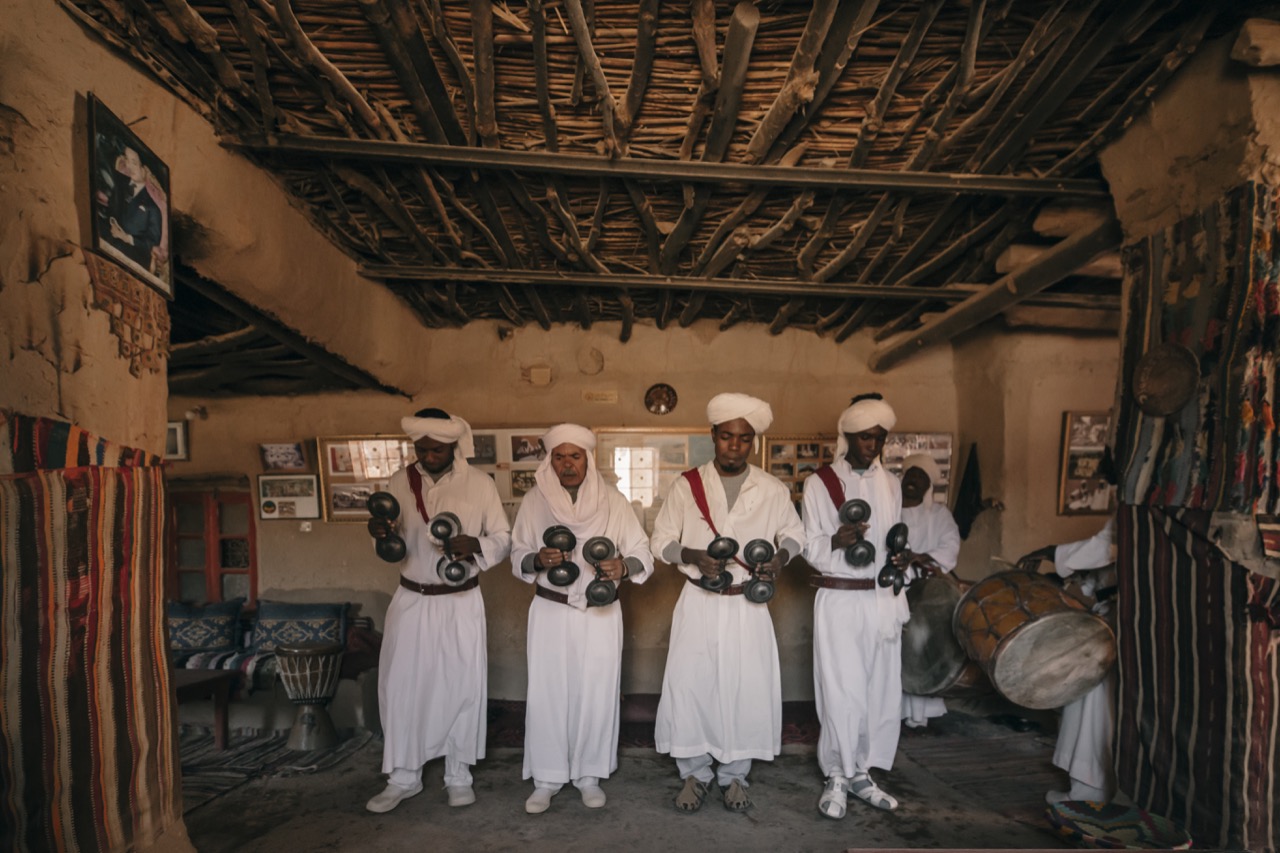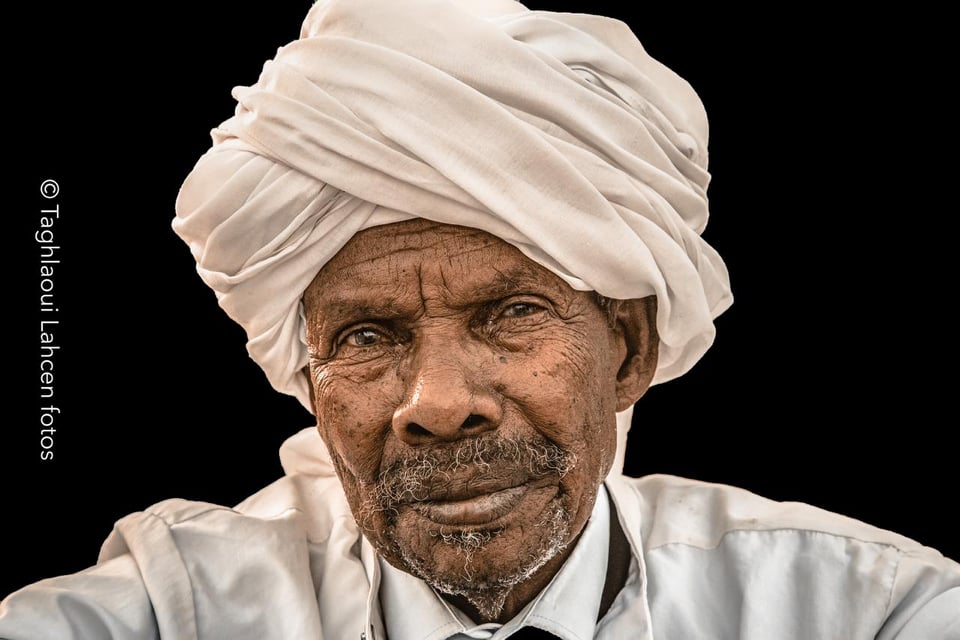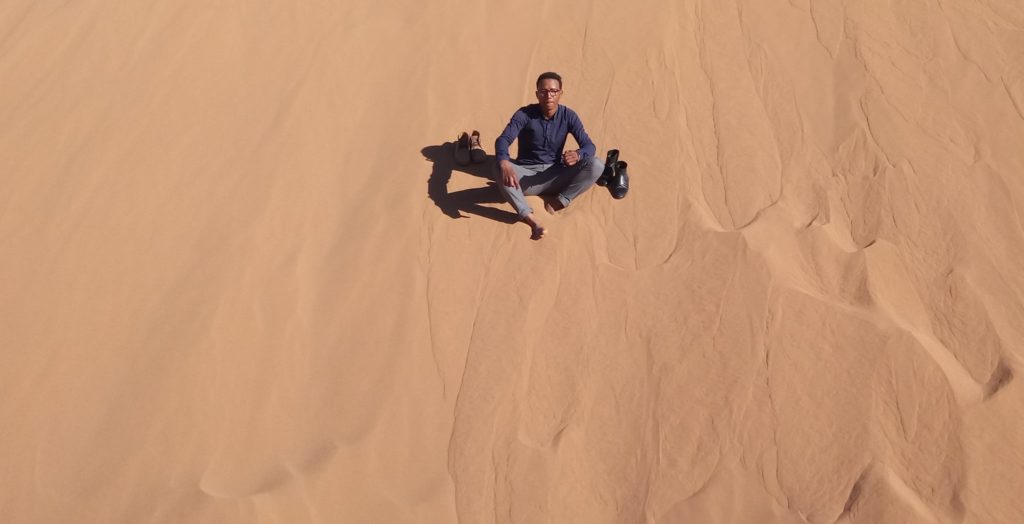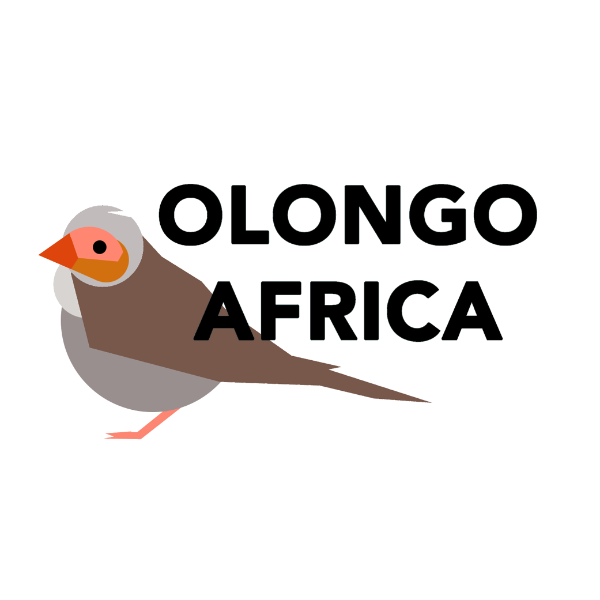
Gnawa Music and the Making of Dark-skinned Moroccan Identity
Morocco’s reputation as a demographically heterogeneous country is perhaps one of its internationally recognizable characteristics. The presence of many ethnic groups, mainly dark-skinned people, is clear proof that traces of the Trans-Saharan trade are still unquestionably vivid. Ostrich eggs, salt, and jewelry were among the goods traded across the Sahara. Nevertheless, those, unfortunately, were not the only exchanged merchandise. People from different Sub-Saharan countries were also traded, merchandised, like other commodities and were forcefully brought to North African countries such as Morocco. Mohammed Ennaji, a Moroccan scholar estimated that the number of enslaved people in North Africa in an average year was around 20,000 during the trans-Saharan slave trade (cited in Cynthia Becker, 2002).
The enslaved people in Morocco have settled in different parts of the country, but the majority of them are found in South-eastern Morocco; mainly in the Draa and Tafilalt regions. Tafilalt was once the home of Sijlmasa, a crossing point for all caravans coming from Sub-Saharan Africa. Since the caravans also carried slaves, in addition to goods, many of them were captured in Morocco, particularly in Tafilalt. There, the enslaved people often worked as shepherds, domestic servants, and as farmers (Cynthia Becker, 2002). The presence of dark-skinned people along with the Amazigh population of the region has led to the establishment of a racial hierarchy according to skin color where the Amazigh occupied the top while slave descendants are at the bottom of the pyramid. This was manifested in the ethnonym, Ismkhan, used to address people of African descendants. Ismkhan was the word used by the Amazigh to refer to the slaves and their descendants. Ismkhan, the plural form of Ismkh means a slave in Tamazight. After the abolishment of slavery in Southeastern Morocco with the advent of the French occupation of the region, the term’s use decreased significantly. Contrarily, the word Ismkhan continued to be used by dark-skinned people in order to firstly recognize their status as descendants of slaves and secondly to create an identity that unifies them and at the same time stresses their difference from the Amazigh.
Despite the remarkable fusion with Amazigh groups who enslaved them, Ismkhan continue to cling abruptly to their Sub-Saharan origins. Like slaves in the Americas and other continents, Ismkhan or slaves in Morocco also use material culture, language, and musical performance to create an identity and a community for themselves . This consciousness paved the way to the rise of Gnawa, a music genre that is believed to originate from Sudan. In Morocco, gnawa first originated in Khamlia, a tiny village situated in the Tafilalt region that is believed to be the homeland of the slaves brought to Morocco.

Gnawa is a type of performance that combines the longing for the homeland and religion together to create an astonishing and “sacred” music genre. Linguistically, the meaning of the term gnawa most likely derives from the Berber word gnawi, which is connected with skin color. It means “black man” in contrast to the light-skinned Berber says Chouki El Hamel in 2013. For the Ismkhan, it is a tool of self-expression and, more importantly, of self-identification i.e. Ismkhan knew that identifying themselves through Aheydus[i] would, at best, remind them of their enslavement history. In addition, no Amazigh tradition was capable of transmitting Ismkhan’s genuine messages and suffering. Hence, they created Gnawa music, hoping that not only it would serve to utter their long buried nostalgia for, and aspiration to return to their homelands, but also in order to stress on their difference, as well as to create an identity for themselves that is similar yet different from Amazigh.
During the performance of Gnawa, there are sartorial rules that all Ismkhan men are to abide by. Attire is a very crucial element in Gnawa, and the sheikh “Leader” ensures that every man’s clothing conforms to the norms of Tagnawit, “The practice of Gnawa”. All men have to wear white gowns with white shirt underneath, white slip-on shoes, a brown leather belt, a baggy, and short pants (preferably white) . The white colour is a symbol of purity. Accordingly, the Ismkhan make sure that all men must purify themselves prior to performing.
Unlike the instruments used to perform Aheydous, Ismkhan have invented new instruments, a drum with membrane on each side and cymbals, made from iron with straight bars in-between, called qaraqsh. These instruments suggest a connection to the history of slavery in Morocco. Cymbals and qaraqsh, also known as qraqab, symbolize handcuffs. Historically, when a slave is transferred from one place to another, he/she is usually handcuffed. Hence, using qraqab, Ismkhan express their disapproval of their history of enslavement in Morocco and, at the same time, express that the qraqab does no longer hinder their freedom, but rather is used to create a genre of music that is unique to dark skinned people in Morocco.
Ismkhan are mostly bilingual. Their enslavement by Amazigh groups in the Tafilalt region and the use of Arabic among themselves have enabled them to acquire both languages as mother tongues. Language use amongst Ismkhan is very interesting. They use Tamazight when performing Aheydous and shift to Moroccan Darija, a dialect of Arabic, when performing Gnawa. Switching to Arabic during the performance of Gnawa is not arbitrary, rather, it is a systematic process that on the one hand reinforces the Ismkhan’s identity as descendants of Slaves from Sudanic Africa and, on the other, emphasizes their difference from other ethnic groups . Gnawa is replete with vocabulary that harps on the Sudanic origin of most Ismkhan . One of the recurrent phrases throughout the entire performance is:
Oh Sudanese women, Oh our dear Sudanese mother.
Ah Sudanea, Ah ma ya hanna Sudanea.
Let’s unite, let’s unite, let’s unite people from the Sudan, let’s unite.
Yallah an-mun, yallah an-mun, yallah a Sudani, yallah an-mun.
Ismkhan enslavement and long quest for their ancestor’s origins have led to the establishment of Gnawa, a music performance typical to dark skinned people in Morocco, that reinforces their origins and connection to Sub-Saharan Africa. Gnawa music, with all the aspects it comprises, has helped Ismkhan to create an identity for themselves. An identity that proudly highlights their association with slavery across the Sahara, and, in the meantime, emphasizes their distinctiveness from other ethnic groups in Morocco.
Ever since its establishment, Gnawa has imposed itself as one of the most famous music genres that has incorporated the richness of Morocco’s music arena. However, starting from 2000, the successive years of drought and severe unemployment in the Tafilalet region pushed many Ismkhan to travel North Morocco in quest for jobs and better conditions. As a result, Gnawa’s popularity and practice in the Tfailat region noticeably decreased. This has brought the attention of many Ismkhan to the importance of actively advertising their Gnawa music. Ismkhan then named themselves Gnawa of Khamlia, and ultimately reached Moroccan as well as International tourists (Becker, 2002). Nowadays, Ganwa music continues to be perceived as a traditionally spiritual music genre. Thousands of people are attracted by the festival of Gnawa held, after the Spring harvest, in Khamlia, a tiny village on the border of the desert which is predominantly inhabited by dark-skinned people. There is a widespread belief that Ismkhan are very adept at healing some of the illnesses such as inflicting strokes, paralysis, mental illness or epilepsy that are caused by spirits called Jnoun (Becker, 2002). Therefore, many people that attend the festival come primarily to seek healing.

While Gnawa music remains faithful to its basic essence, which is uttering the longing to the homeland, and nostalgia to Sub-Saharan Africa, other aspects related primarily to instruments and clothing, have significantly changed. To better explain this variation from the traditional Gnawa, it is crucial to draw a geographical distinction between Gnawa performed in the South-eastern and the one found in Northern Morocco mainly in Marrakech and Essaouira. The former, on the one hand, remains “pure” and fidel to the kind of clothing and instruments and aspects that have originated with it. The latter, on the other hand, has been internationalized and hence has adopted instruments that are typical to other music genres, namely Jazz.
Today, many festivals of Gnawa are held yearly in Morocco. The Festival of Gnawa in Essaouira is a case in point. It attracts thousands of Moroccans as well as international tourists and musicians. While Gnawa remains a mode of expression mainly for dark-skinned Moroccans, the music is taken by others, mainly youth as an entertaining form.
Endnote
[i] Aheydous a type of performance typical of Amazigh groups in the Middle Atlas and southern Morocco. For more information, see Cynthia Becker (2002) ‘We are real slaves, real Ismkhan’: memories of the trans‐Saharan slave trade in the Tafilalet of South‐Eastern Morocco, The Journal of North African Studies, p113.
Bio:
Sofyan Essarraoui is from Morocco. He was born in a tiny village in Zagora. He is a Fulbright scholar and currently works as an English teacher at ElAraki International of Morocco.
